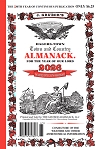The Cumberland Times-News

Series of Fronts This Week Will Trigger Damaging Winds!
Just as Mother Nature loosens her grip on the winter snow and cold, she has a few curve balls coming at western Maryland and the Potomac Highlands this week.
A cold front will induce a Foehn high wind phenomenon east of the Continental Divide on Tuesday. While breezy winds are expected through daybreak Tuesday across the board, the strongest gusts will occur from Frostburg to Little Orleans and south into the Potomac Valley of West Virginia between 7 a.m. and Noon. The down sloping flow under mostly sunny skies will allow the winds to accelerate to 55 to 60 mph off the lee of the Allegheny Ridge Tuesday morning when the front pushes through.
A similar Foehn wind event occurred in early January 2003 and blew a carport off a trailer home in Petersburg. It also blew a tree into a house in Pendleton County. Hundred of trees and several power lines came down in Mineral County leaving 3,300 county residents lost power.
On the heels of Tuesday’s front, another gusty front will rocket through on Wednesday afternoon with gusts likely reaching 40-55 to mph. This front will also trigger at least scattered power outages and damage.
Both fronts will trigger a few snow showers in Garrett County, but accumulation is not expected to exceed 2 inches nor is it expected to trigger travel problems. No precipitation is expected with either front east of a line from Route 219 to 36.
The series of fronts through midweek is part of a transition to a milder emperature regime to start off February.

Chad Merrill is a Cumberland native and meteorologist who not only serves as the Hagerstown Town and Country Almanack weather prognosticator but has previously been meteorologist with WDVM (formerly known as NBC25) in Hagerstown and at WJAC-TV in Johnstown, Pennsylvania, and was chief meteorologist at WOAY-TV in Oak Hill, West Virginia in 2023. He has recently accepted the position of Senior Meteorologist with AccuWeather in State College, Pennsylvania beginning in 2025. After a rigourous evaluation, Merrill was awarded the National Weather Association (NWA) Seal of Approval in 2022. According to the association, only 1,045 meteorologists currently hold the NWA Seal of Approval. In April, 2023, Merrill, was inducted into the prestigious Marquis Who's Who Biographical Registry! Feel free to contact him at cmweather24@gmail.com or 240-285-8476.


















